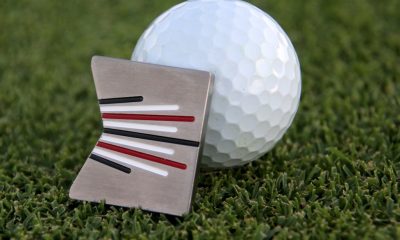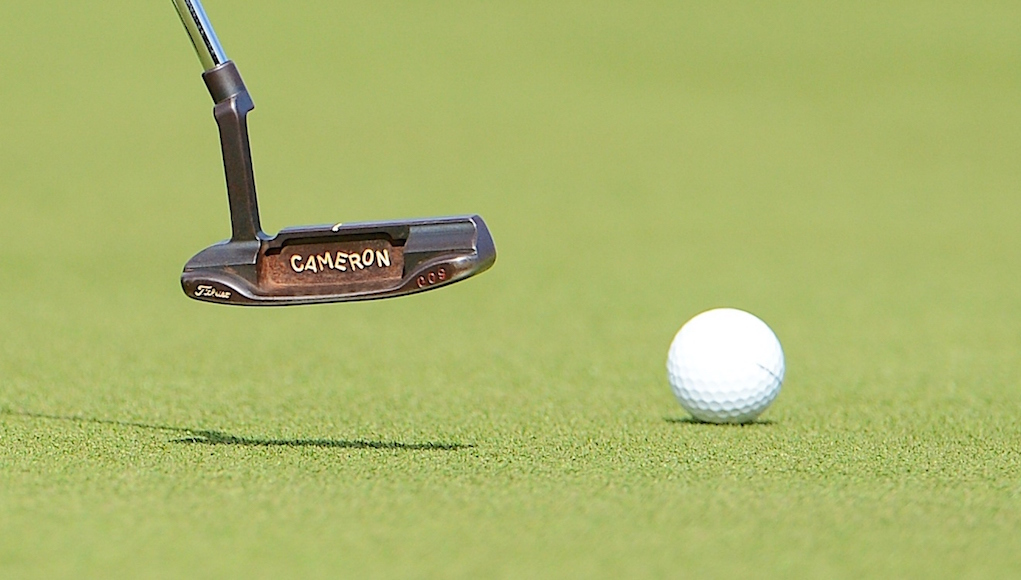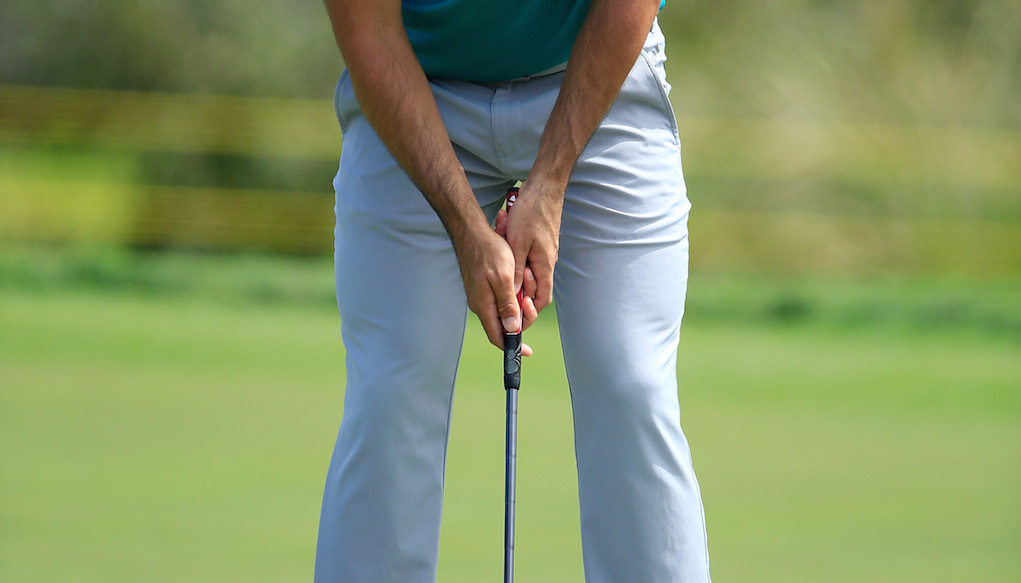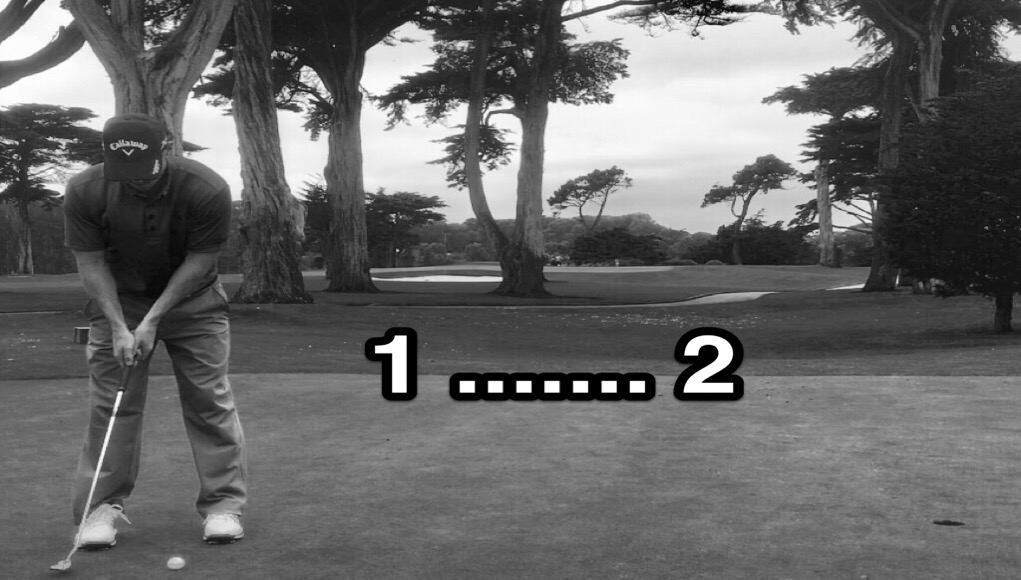Instruction
Seven tips to help shave 10 shots off your game

For golfers, the change from being a 95-shooter to scoring in the low- to mid-80s is huge. It changes the way they feel about the game and opens their eyes to their true potential.
I remember when I made that jump and how it fed into my lifelong love for the game. I’ve heard more than one new student say that they aren’t scoring well and are not enjoying the game enough to continue playing, and the recipe below has helped them lower their handicaps by as many as 10 shots in a season and enjoy the game again. You’ll notice that none these steps has anything to do with crafting the perfect swing. A few of them won’t take much time at all. And these steps are not just for 18 handicaps; they will help players of every level.
No. 1: Assess Your Skills
Your coach should be able to assess your putting, short game and ball striking, and determine where you stand relative to your goals. If you’re a 12 handicap, want to get to an 8 and your short game handicap is 15, that’s probably the area you need to focus on most. ShotByShot.com, one of golf’s leading analytics company, allows a coach to handicap every skill area. Together, the coach and student can prioritize their work on the areas that will lower scores and boost their confidence the fastest. Doppler radar launch monitors like my Flightscope X2 and Trackman are also incredible teaching tools. They help show players exactly how far they hit their clubs, how accurately they hit them and even how weather changes affect ball flight.
No. 2: Assess and change your clubs
Most new students have at least two clubs in their bag that actually hurt them. They often have too little loft, or shafts that are too long and too stiff or have the wrong playing characteristics. Shafts, grips and club heads all need to suit your swing and your skill level, and they need to be fitted to your specs. Every club in your bag should suit the conditions you play most and your clubs need to be properly gapped so you can hit more greens. The only way to know how to gap your clubs accurately is to use a launch monitor.
No. 3: Work on keeping your tee shots in play
Contrary to popular myth, distance is not as important to an average player’s improvement as it is to PGA Tour players. Peter Sanders from ShotByShot.com has an extensive amount of data on how regular golfers play the game. Statistics that he has collected for 20-plus years indicate that a shot in the fairway can be worth as much as 50 yards versus a shot in the primary rough for the average player. That means that most golfers cannot control a 9 iron out of the rough (or from behind a tree) as well as we can control a 6 or 7 iron from the fairway. If you play the proper tees, keep the ball in front of you and hit it at least 220 yards, you will score much better.
How do you do that? First, get a properly fitted driver with a loft and shaft that will help you get the most out of your swing. Second, understand that hitting your driver is only necessary a handful of times a round if you play from the correct tees. Lastly, find a coach who can help you develop a balanced, repeatable swing that will allow you to generate speed and make solid contact with a square club face. The “5 Simple Keys” system allows players to clarify their thought process and focus on making a better, more athletic motion.
No. 4: Work the Wedges
The PGA Tour average for greens hit in regulation is just more than 12, but regular golfers hit fewer than five a round. The best players in the world keep their momentum by getting the ball up and down, which they have to do five or six times a round. Unless you are an extraordinarily gifted amateur, you have to do it more often than the pros, and whether you’re successful will determine the direction of your round.
The best way to do this is mix technical training with “transfer” training. The first step is learning good pitching technique. Keep your weight on your lead foot during the entire stroke. Play the ball no farther back than the middle of your stance and farther forward if you want to hit a higher shot. Aim the face of the club at your target and open your stance more or less depending on how high you want to hit the shot. Then just fold your trail elbow in the backswing, turn your chest through impact and feel like you’re dropping the club head on the back of the ball. Finish on your lead leg facing the target and let your arms softly fold in the follow through. This technique leads to great distance and trajectory control, the two key elements to pitching the ball around greens. Practice it around a putting or chipping green, but don’t be afraid to drop balls in different spots during casual rounds. Remember that shotmaking is basically improvisation, which you must develop through on-course transfer training.
No. 5: Focus on putting and get fitted for a putter
If they actually practice putting, many golfers grab a sleeve of balls, go to the putting green and hit putts of random length and break until they feel they have finished their lap. Whether this occurs in the minutes before teeing off or for the 15-to- 20 minutes after a long-range session, neither provides effective practice. You need to have a strategy for getting better, and that means going to a teacher who can give you the tools you need because he or she is trained to teach putting and to fit you for a putter. According to industry data, fewer than 10 percent of golf lessons are on putting, so choose wisely.
The U.S. Open at Pinehurst is coming up, and many of us remember the role the SeeMore putter played the last time the Open was held there in 1999. Fifteen years later, the SeeMore Putter Institute has more than 300 certified instructors all around the globe who can custom fit you to a putter and teach you the system that helped numerous major champions.
No. 6: Go through a ball fitting
The ball you play and its compression matters a lot. The only way to know definitively is to go through a ball fitting with a qualified professional. There’s a debate now on where a proper ball fitting should start. Should golfers place more importance on the performance of their ball around the green or off the tee? Bridgestone has it right. First, the science shows that compression matters. Here’s an example why: Bridgestone makes the low-compression U.S. Kids Golf Yellow ball and a junior golfer can gain as many as 15 yards by simply switching from a high-compression adult ball. That could be a three-club difference when it comes to a junior’s approach shots, which is the difference between loving golf and being discouraged by its difficulty.
Bridgestone offers different compression balls with different spin options to satisfy your feel needs around the green. Start with your swing speed and then make your choice about how you want your ball to spin and feel on short shots.
No. 7: Focus on scoring, strategy and your target
Hogan said that “placing the ball in the proper position for your next shot is 80 percent of winning golf.” Most players get enjoyment from hitting the ball pretty well and scoring well. If you don’t think about golf strategically, there’s no way you’ll get to the second part and your frustration will probably prevent reaching the first part sooner rather than later.
Everyone, even golf pros, have limited time to practice and play. Keeping expectations reasonable and focusing as much as possible on the tangible, real things that will allow you to play the shot at hand as well as you can is the best use of that time. For “real-life” golfers, the game is simply not about hitting the most glorious drive you’ve ever seen then trying to get it close with a wedge. It’s about creating a more complete toolbox of skills and scoring with strategic choices and well-executed shots.
- LIKE136
- LEGIT58
- WOW23
- LOL15
- IDHT17
- FLOP17
- OB14
- SHANK37
Instruction
Clement: Weak grips are injuries in the making for many golfers

Like Jordan Spieth, trying to go to a bowed wrist at the top or in the downswing to square the club is placing you in a dangerous position for your lead wrist; you are one tree root or deep rough situation away from a nasty injury that could easily require surgery. Don’t let this be you.
- LIKE1
- LEGIT0
- WOW0
- LOL0
- IDHT1
- FLOP2
- OB0
- SHANK3
Instruction
Clement: Laid-off or perfect fade? Across-the-line or perfect draw?

Some call the image on the left laid off, but if you are hitting a fade, this could be a perfect backswing for it! Same for across the line for a draw! Stop racking your brain with perceived mistakes and simply match backswing to shot shape!
- LIKE2
- LEGIT0
- WOW0
- LOL0
- IDHT0
- FLOP0
- OB0
- SHANK1
Instruction
The Wedge Guy: The easiest-to-learn golf basic

My golf learning began with this simple fact – if you don’t have a fundamentally sound hold on the golf club, it is practically impossible for your body to execute a fundamentally sound golf swing. I’m still a big believer that the golf swing is much easier to execute if you begin with the proper hold on the club.
As you might imagine, I come into contact with hundreds of golfers of all skill levels. And it is very rare to see a good player with a bad hold on the golf club. There are some exceptions, for sure, but they are very few and very far between, and they typically have beat so many balls with their poor grip that they’ve found a way to work around it.
The reality of biophysics is that the body moves only in certain ways – and the particulars of the way you hold the golf club can totally prevent a sound swing motion that allows the club to release properly through the impact zone. The wonderful thing is that anyone can learn how to put a fundamentally sound hold on the golf club, and you can practice it anywhere your hands are not otherwise engaged, like watching TV or just sitting and relaxing.
Whether you prefer an overlap, interlock or full-finger (not baseball!) grip on the club, the same fundamentals apply. Here are the major grip faults I see most often, in the order of the frequency:
Mis-aligned hands
By this I mean that the palms of the two hands are not parallel to each other. Too many golfers have a weak left hand and strong right, or vice versa. The easiest way to learn how to hold the club with your palms aligned properly is to grip a plain wooden ruler or yardstick. It forces the hands to align properly and shows you how that feels. If you grip and re-grip a yardstick several times, then grip a club, you’ll see that the learning curve is almost immediate.
The position of the grip in the upper/left hand
I also observe many golfers who have the butt of the grip too far into the heel pad of the upper hand (the left hand for right-handed players). It’s amazing how much easier it is to release the club through the ball if even 1/4-1/2″ of the butt is beyond the left heel pad. Try this yourself to see what I mean. Swing the club freely with just your left hand and notice the difference in its release from when you hold it at the end of the grip, versus gripping down even a half inch.
To help you really understand how this works, go to the range and hit shots with your five-iron gripped down a full inch to make the club the same length as your seven-iron. You will probably see an amazing shot shape difference, and likely not see as much distance loss as you would expect.
Too much lower (right) hand on the club
It seems like almost all golfers of 8-10 handicap or higher have the club too far into the palm of the lower hand, because that feels “good” if you are trying to control the path of the clubhead to the ball. But the golf swing is not an effort to hit at the ball – it is a swing of the club. The proper hold on the club has the grip underneath the pad at the base of the fingers. This will likely feel “weak” to you — like you cannot control the club like that. EXACTLY. You should not be trying to control the club with your lower/master hand.
Gripping too tightly
Nearly all golfers hold the club too tightly, which tenses up the forearms and prevents a proper release of the club through impact. In order for the club to move back and through properly, you must feel that the club is controlled by the last three fingers of the upper hand, and the middle two fingers of the lower hand. If you engage your thumbs and forefingers in “holding” the club, the result will almost always be a grip that is too tight. Try this for yourself. Hold the club in your upper hand only, and squeeze firmly with just the last three fingers, with the forefinger and thumb off the club entirely. You have good control, but your forearms are not tense. Then begin to squeeze down with your thumb and forefinger and observe the tensing of the entire forearm. This is the way we are made, so the key to preventing tenseness in the arms is to hold the club very lightly with the “pinchers” — the thumbs and forefingers.
So, those are what I believe are the four fundamentals of a good grip. Anyone can learn them in their home or office very quickly. There is no easier way to improve your ball striking consistency and add distance than giving more attention to the way you hold the golf club.
More from the Wedge Guy
- The Wedge Guy: Golf mastery begins with your wedge game
- The Wedge Guy: Why golf is 20 times harder than brain surgery
- The Wedge Guy: Musings on the golf ball rollback
- LIKE93
- LEGIT16
- WOW6
- LOL1
- IDHT0
- FLOP4
- OB1
- SHANK9
-

 Product Reviews1 week ago
Product Reviews1 week agoThree Swing Challenge: Testing the Edel Array F-2 putter
-

 Equipment2 weeks ago
Equipment2 weeks agoWhat clubs do equipment free agents choose to use on tour? We found out
-

 19th Hole3 weeks ago
19th Hole3 weeks ago‘You’re right, we’re always wrong!’ – Sergio Garcia receives warning during Open qualifier
-

 News2 weeks ago
News2 weeks agoHighlights from the Wilson Golf Product Testing and Fitting Experience at Pinehurst
-

 News2 weeks ago
News2 weeks agoDavis Thompson’s winning WITB: 2024 John Deere Classic
-

 Equipment3 weeks ago
Equipment3 weeks agoQ&A: The truth behind Bryson DeChambeau’s new Avoda irons from company founder Thomas Bailey
-

 19th Hole2 weeks ago
19th Hole2 weeks agoMajor champ ‘disappointed’ not to be chosen as U.S. Ryder Cup captain
-

 19th Hole2 weeks ago
19th Hole2 weeks agoLIV pro explains how he believes players are ‘cheating’ on DP World Tour



























Pingback: Golf Ball Compression,.. a Closer Look | Hix Magazine - Everything for Men
Pingback: 5 Tips to Improve Your Golf Game | Sturbridge Homes
Pingback: 5 Tip to Improve Your Golf Game | Sturbridge Homes
B
Jun 3, 2014 at 3:09 am
Just the article I needed to read this morning! Range or multiple rounds daily? I hit the driving range with approximately 50 balls then play 18. What I do on the range does not transfer. Any advice?
Paul Kaster
Jun 5, 2014 at 7:53 am
We need to learn technique and play golf to get the most out of our game, but I would err in the side of playing more golf and spending a smaller percentage of time on the range. We don’t play golf on a perfectly flat lie with multiple tries a the same shot. My best advice is find a qualified coach who can assess your skills and target instruction to the areas that need the most help.
Adam
May 30, 2014 at 8:01 am
I Think the article is right on point on everything except the title and the numbering (if the list is hierarchical). If we’re talking about 10 strokes saved, based on 7 things, we’re talking about 20+ handicappers or we’re talking about a lot of time. The 20+ handicapper needs something to get them back on the range, which is number 3 the long straight drive (with a driver- no new golfer brags about a 200 yd straight 3 wood). If we’re talking about going from a 15-5 we’re essentially in the world of cliché- “do you know how to get to Carnegie Hall?” “practice, practice, practice.” Hierarchical list: 3,5,1,6,2,4,7.
Paul Kaster
Jun 1, 2014 at 9:27 am
Thanks Adam. The list isn’t hierarchical – all of these are going to depend on what a individual player’s strengths already are. Obviously keeping tee shots in the fairway is very important, but it may not be as important for you as it is for another player. That’s where the assessments come in. If your swing speed is 85 mph and you’re very straight, playing a lower compression ball could help you gain 2 clubs on shots from the fairway which is a big deal for scoring…
Wayne L
May 29, 2014 at 10:40 pm
Paul, I think your article is spot on. Focusing on #3 has taken me into the low 80’s with a legitimate chance of getting into the 70’s. Short game work, especially greenside bunker play has made the game “fun” again. For most of us weekend warriors, solid wedge play helps on days when ball striking isn’t quite there.
Paul Kaster
Jun 1, 2014 at 9:29 am
Thanks Wayne! Glad you’re improving and enjoying your golf. Getting better at short game and putting can really change our golf outlook. If we can get the ball up and down and make putts, we start to believe we can play the golf of our dreams.
Martin
May 29, 2014 at 9:27 pm
It’s a good article, I did most of those things(not a putter fitting) and it took me from a 23 to a 15.
When I went from to an 8-10 player though, distance did matter. The past couple of years due to a chronic knee problem I have lost about 10 MPH off the driver and instead of hitting 6 iron in I often am hitting 3 hybrid. Puts a lot of pressure on the short game.
This year, I switched drivers, went to a R shaft, I moved up tees last year to the whites, not sure I will be able to maintain a single digits handicap only hitting the ball 200-210 off the tee though.
Daniel Kidd
May 29, 2014 at 3:06 pm
Nice article Paul and thanks for writing. I agree that trying to perfect the full swing is not the most effective way to trim 10 shots off someone’s score. It’s so sad to watch guys hit balls for an hour, with mostly their driver, and then go hit 5 chip shots and a couple of putts and think they put in a good practice session. Focusing the vast majority of practice time on short game and putting will knock strokes off the quickest, like you said in tip #4 and #5. I love the idea of #7, players are usually too mechanical on the course and almost always will benefit from focusing on target and thinking about strategy.
I can’t agree with you on #6 though….I really can’t see how much difference it will make for a 20 hcp to get properly fit for a ball. As long as someone isn’t playing a ball that’s bounced off the cart path a few times, it’s not going to make much difference whether they use a ProV1 or B330 or Pinnacle Gold. Obviously feel and spin around the greens will be affected, but the golfer can adjust to that, especially if he plays the same type of ball all the time. Have you actually seen players knock shots off their score by getting ballfit?
Paul Kaster
May 29, 2014 at 10:29 pm
Thanks Daniel, it’s my pleasure. My point about ball fitting is that typical golfers don’t have high swing speed, which means they will benefit from a lower compression golf ball with the correct spin characteristics for their swing. If, for example, you have an 8 iron in your hand from a fairway lie instead of a 6 or 7 because your drive went 10 or 15 yards further, that changes the way you think about scoring.
Ryan
May 29, 2014 at 12:06 pm
I really liked the article, I can see a lot of my game here and where to improve.
I just hate how the solution is always just to get fit. It’s expensive, and I am still skeptical on how effective this is.
Mark M
May 29, 2014 at 12:45 pm
I share the same sentiment about fitting. I’m sure it will help, but I’m not confident I could find a reputable fitter in my area. My hesitation is that the “fitter” won’t know more than I do and will simply be trying to sell me whatever he is pushing at the time.
Paul Kaster
May 29, 2014 at 1:48 pm
Getting fitted for clubs doesn’t always mean buying a completely new set. I assess my students’ clubs and take them through a fitting to determine if there is something out there that can help them. They pay for my time but often times we only change a couple of clubs. Gapping irons and wedges is enormously important and usually doesn’t require a lot of investment.
This is a great place to start when you’re trying to find good fitter: http://www.golfdigest.com/golf-equipment/2013-05/100-best-clubfitters
Mark M
May 29, 2014 at 11:21 am
Great article. I especially agree with the advice on improving the short game and putting. That is where I know I need a lot of work personally, and from what I see with others that is where they fall short as well.
I also agree with the points about distance being overrated. Keeping it in the fairway will shave more strokes than 20 more yards every time, in my opinion. I think we have a tendency to fear hitting long irons and fairway woods or hybrids (whatever works best for you) as the second shot but if you practice practice practice it’s not that big a deal. I think people tend to favor the short irons on the range as a confidence builder: I know I do
ParHunter
May 29, 2014 at 10:14 am
Quote: “Contrary to popular myth, distance is not as important to an average player’s improvement as it is to PGA Tour players.”
Interesting, Mark Broadie, the Inventor of the Strokes gained stats comes to the opposite result in his book ‘Every Shot Counts’. An extra 20 yards of the tee gives and PGA professional only 0.8 Strokes/round while for an 100 golfer it would be 2.3 Strokes gained. PGA (0.8), 80-golfer (1.3), 90-golfer (1.6), 100-golfer (2.3) 115-golfer (2.7).
Paul Kaster
May 29, 2014 at 1:42 pm
Thanks ParHunter, I’m aware of Mr. Broadie’s work and think it’s very valuable for understanding how TOUR Players play the game. I guess my point is that recreational golfers are different. The work it will take a typical 100-shooter to gain 20 yards is not worth the 2.3 strokes…There are other more efficient ways to skin the cat. If someone is shooting 100, it’s usually because they need help in a lot of different areas. These are the things I do with those kinds of players to get them better, faster so we don’t lose them to other forms of recreation.
ParHunter
May 29, 2014 at 5:48 pm
I agree, chipping and putting is the easiest way to cut strokes (when you are rubbish at it) but it won’t save you 10 shots
IH8
May 30, 2014 at 9:59 am
Totally agree here. I get that short game practice helps (especially, as ParHunter says, when you suck at it), but I think ball striking is undervalued. I play with guys who struggle to break 100 and they’ll say their scores would drop with short game practice. Sure, they have lousy short games, so it would definitely help, but getting rid of those o/b slices and water balls would help even more. A duffed chip costs you a stroke, a fat 7 iron into the creek costs you 2. Pretty simple math there.
IH8
May 29, 2014 at 10:01 am
I’m actually a high 80’s-ish shooter and am currently working on many of the things referred to in this article. It’s all well and good, but I don’t think it matches up with your original premise, i.e. people quitting. If people are quitting because golf is too hard (which is a fair opinion to have), I don’t think coming back at them with ‘Well just drop a couple grand on equipment and lesson and you’ll improve by summers end’ is going to convince them to stay. Your points are totally valid and I’m sure many people on this site are totally down with what you’re writing (myself included), but lets keep in mind that we are a choir here and you are indeed preaching to us. These types of tips would only work for someone who’s pretty thoroughly invested in the game.
Paul Kaster
May 29, 2014 at 1:36 pm
Thanks for the comment and glad you are working on many of these aspects of your game. This isn’t how I sell my programs (new students come to me mostly by referral), it’s what I actually do with my students. To get better at golf, you have to be invested. One of the problems with the culture of the game is the idea that there is a quick fix or route to becoming a much better player.
G
May 28, 2014 at 10:34 pm
Stupid article. The most reasonable reason 95ish golfers can’t shoot in the 80s is because they are inconsistent. At driving, at irons, at chipping, at putting. One inconsistency per round can cost you an 80ish…
Paul Kaster
May 28, 2014 at 11:12 pm
Thanks for your constructive criticism…Numbers 3,4 and 5 addressed the things you mentioned.
Jeff
May 29, 2014 at 3:34 am
Really good article. I’ve basically done what you’ve outlined and with the help of other wrx writers/ statisticians articles from guys like Rich Hunt, I’ve tried to find a Money Ball approach to improvement.
SBoss
May 29, 2014 at 4:07 pm
Actually, it’s not a stupid article at all. Sometimes it helps to remind yourself of some of the finer points of the game that can make a difference. Just working on chipping properly is one great way to lower scores. First, if you have the right chipping motion it’ll make you a better ball striker and second it’ll shave some strokes around the greens every round.
I always marvel at short sighted people who throw out comments like “stupid article”…like they’ve got it all figured out. Actually, nobody forces anyone to implement any advice. And it’s typically somebody that can’t play the game at a decent level making the comments.
Cris
May 28, 2014 at 7:41 pm
I’d take hitting a 9 iron from the light rough over a 5 iron from the fairway any day all day. That would be the 50 yards gap between my clubs.
Paul Kaster
May 28, 2014 at 7:59 pm
You don’t always get a decent lie in the light rough when you miss a fairway though Chris…
paul
May 28, 2014 at 2:20 pm
I found that not hitting driver off the tee, and learning to hit straight irons shot was the key to success. And a laser to know distance.
Daniel V
May 28, 2014 at 12:58 pm
People often worry about having a picture perfect swing, buy cleaning up your short game, can really shave off some strokes.
Paul Christianson
May 28, 2014 at 11:58 am
Check out http://www.scorerings.com if you are looking for a quick and easy solution for making target circles on the golf green.